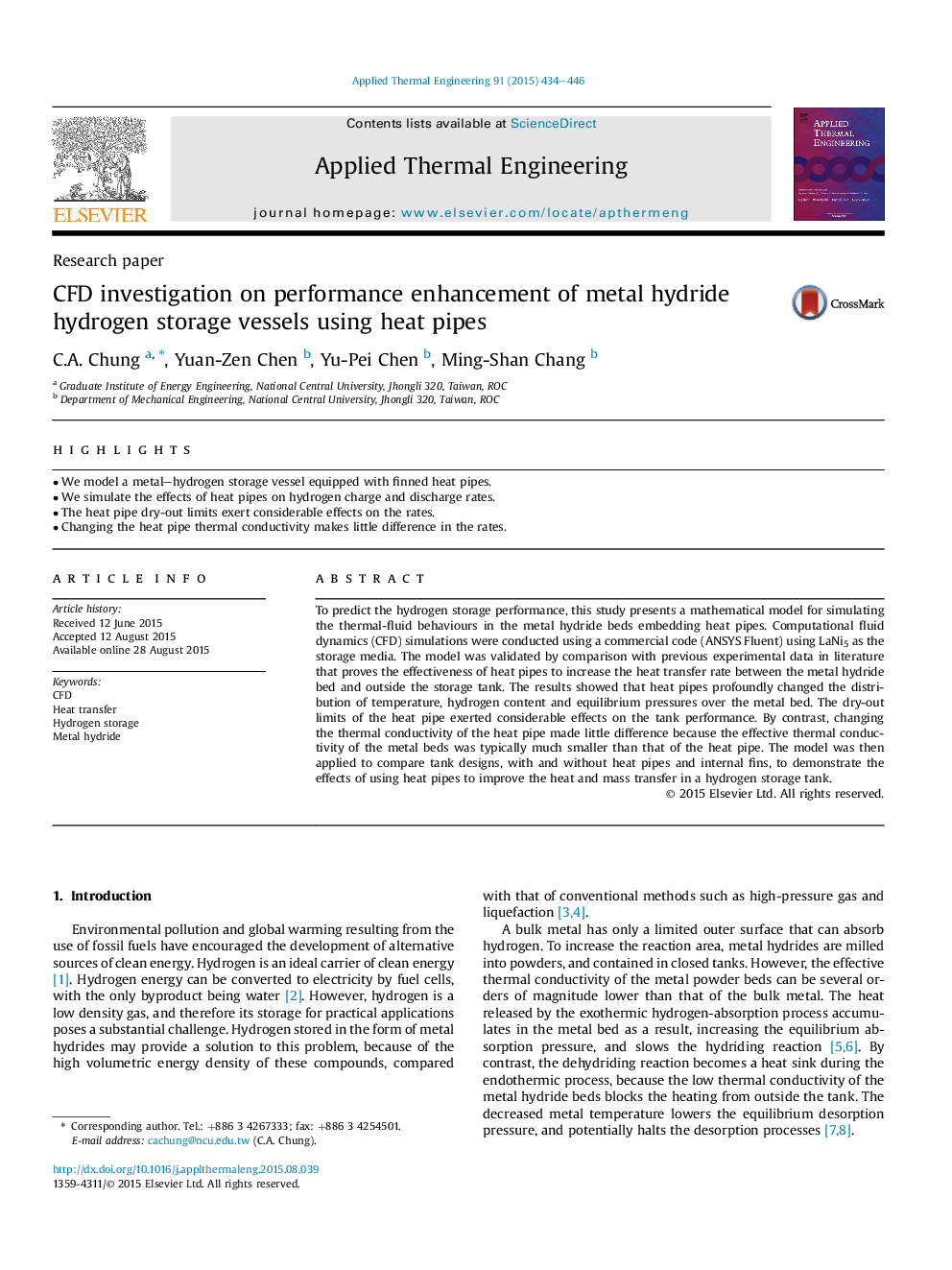| Article ID | Journal | Published Year | Pages | File Type |
|---|---|---|---|---|
| 645088 | Applied Thermal Engineering | 2015 | 13 Pages |
•We model a metal–hydrogen storage vessel equipped with finned heat pipes.•We simulate the effects of heat pipes on hydrogen charge and discharge rates.•The heat pipe dry-out limits exert considerable effects on the rates.•Changing the heat pipe thermal conductivity makes little difference in the rates.
To predict the hydrogen storage performance, this study presents a mathematical model for simulating the thermal-fluid behaviours in the metal hydride beds embedding heat pipes. Computational fluid dynamics (CFD) simulations were conducted using a commercial code (ANSYS Fluent) using LaNi5 as the storage media. The model was validated by comparison with previous experimental data in literature that proves the effectiveness of heat pipes to increase the heat transfer rate between the metal hydride bed and outside the storage tank. The results showed that heat pipes profoundly changed the distribution of temperature, hydrogen content and equilibrium pressures over the metal bed. The dry-out limits of the heat pipe exerted considerable effects on the tank performance. By contrast, changing the thermal conductivity of the heat pipe made little difference because the effective thermal conductivity of the metal beds was typically much smaller than that of the heat pipe. The model was then applied to compare tank designs, with and without heat pipes and internal fins, to demonstrate the effects of using heat pipes to improve the heat and mass transfer in a hydrogen storage tank.
